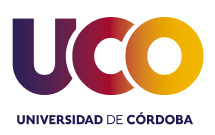Assessment of forest – carbon sinks and promotion of compensation systems as tools for climate change mitigation (LIFE14 CCM/ES/001271)
Despite increasing awareness in the land use, land use change and forestry sectors (LULUCF) concerning climate change action, reflected in Decision 529/2013/EU, the emissions and carbon sink effect generated by sustainable forest management (SFM) strategies are not included in the EU’s greenhouse gas (GHG) emissions reduction objectives (40% by 2030).
As it is not yet considered as a key tool, the climate change mitigation potential offered by SFM strategies is reduced. One of the main limitations preventing a value being put on forestry systems has been gaps in the mathematical models used for assessing the carbon sink effects of Mediterranean conifer forests. For this reason, the development of precise prediction tools, and their application through SFM practices for the conservation of natural carbon sinks, is one of the main goals in the context of mitigation planning. This will improve the knowledge base, and the accounting and notification system, for the carbon sink potential of the LULUCF sectors.
General objectives
The main objective of this LIFE proposal is the promotion of forest systems and sustainable forest management as a tool for climate change mitigation through the application of the European legislation related to the accounting of emissions and removals in the land-use sector, changes in land use and forestry (LULUCF), improving knowledge base. This will facilitate an integrated implementation, involving the main stakeholders in the process of enhancement, who include those responsible for offsetting through voluntary market.
Role of the University of Cordoba
The contribution of the UCO to the project can be summarized in three main objectives.
1) To estimate the soil organic carbon (SOC) in Mediterranean forest ecosystem populated by Pinus halepensis and Pinus pinaster.
2) To develop, train and evaluate statistical models which account for the influence of forest management activities in the carbon sequestration.
3) To compare the estimation of SOC in forest soils obtained by the conventional techniques and model estimation.

